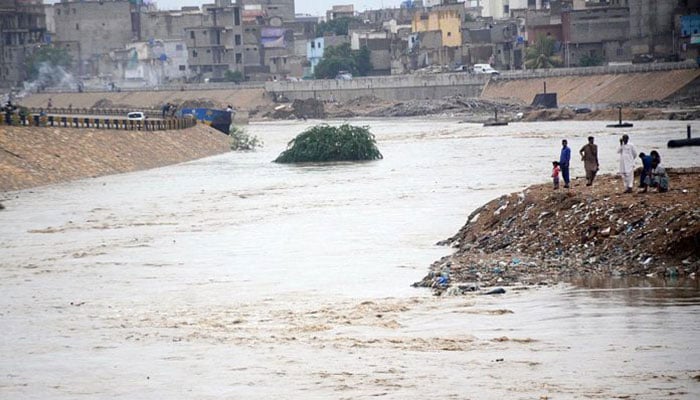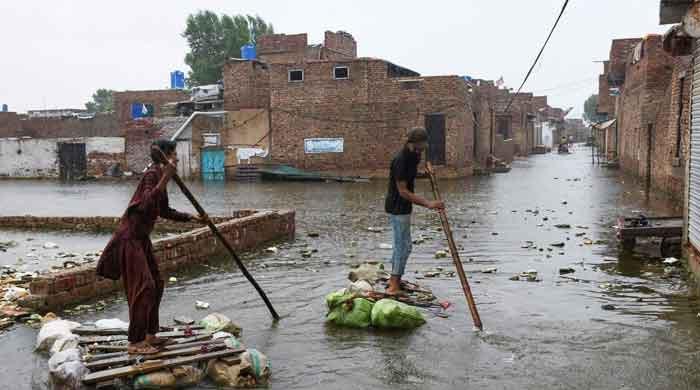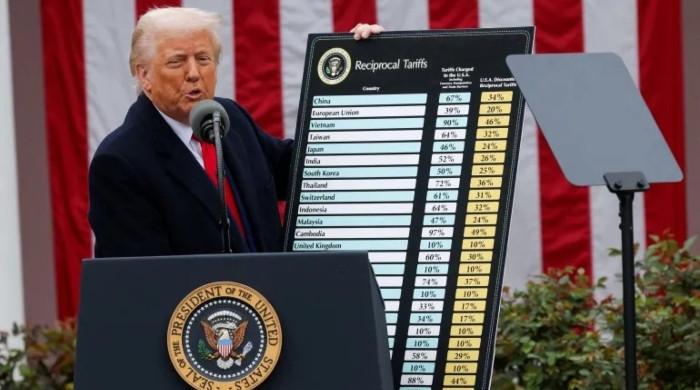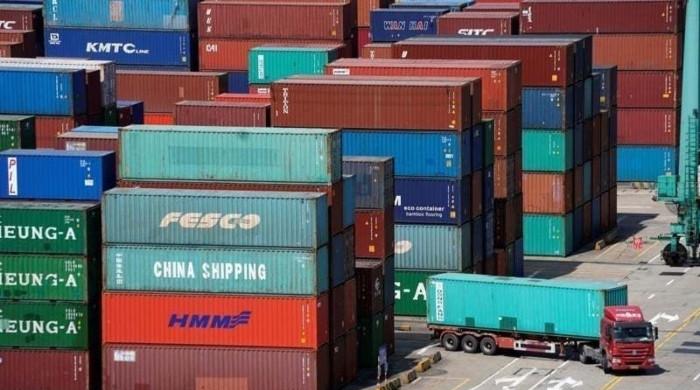Karachi's most polluted river
Pollution has turned the Lyari river into a lethal cocktail of industrial and human waste
September 25, 2019

Had Rachel Carson, an American zoologist, naturalist, ecologist, and journalist, had been alive today and living alongside the Lyari river in Karachi, she would have written ‘Screaming Spring’ instead of her seminal work ‘Silent Spring’.
In 2006, six people fell into the Lyari river and died. They did not drown, but instead the water was so full of effluents that it had turned deadly. Fast forward to February 19, 2014. At least eight women and children drowned in the sewage ravine after they were thrown from a speeding truck. Similarly on August 2018, two minors drowned in the Lyari river near the Surjani Town.
Lyari is one of the two rivers that flows through Pakistan’s most populous city, Karachi. Yet, in recent years it has come to be known as the ‘deadly river’, for becoming a dangerous mix of human and industrial waste.
Originating from the Kirthar Range of mountains, north of Karachi, the river runs 50 kilometres long, through the District Central, East and South of the city. Once a potable water channel for the city, the river now discharges around 100 Million Gallons per Day (MGD) of toxic wastewater into the Arabian Sea. Largely due to the industries and informal settlement that run besides it, the river dumps large amounts of untreated sewerage into the sea.
It is important to mention that only the sewage system of central and south Karachi are connected to the three treatment plants in the city. Other sewered areas discharge wastewater, without treatment, directly into nallahs and the two rivers - the Lyari and Malir river. The areas that discharge into these two water bodies, include New Karachi, North Nazimabad, Gulshan-e-Iqbal, Gulberg, Liaquatabad, Lyari, SITE, to name a few.
According to a research study titled, “Exploring Sustainable Solution For Wastewater Treatment: A Case of Lyari River”, conducted in the year 2018-19, there are dangerous levels of heavy metals, nickel and chromium, present in the Lyari river. The safe level for both metals, as per international standards, is 0.1mg/L. But in the Lyari river their quantities range from 16 and 15mg/L. Apart from that, other contaminants were found with levels far beyond the National Environmental Quality Standards. The data further shows that the industrial companies along the riverbed, of pharmaceutical, chemicals, fabric, paints, food-oil, steel, paper and dyeing leather are discharging raw wastewater directly into the sewers.
Back in the 1970s, the Lyari river was home to fish and freshwater. It hosted a variety of seasonal and migratory birds. It not only supported the ecology but was the life-line for humans and non-humans. Today, unfortunately, the river is a repository of industrial effluents and domestic sewerage.
Researchers at the NED university are of the opinion that the existing treatment mechanisms of Karachi cannot withstand this level of pollution. Borrowing data from Karachi Water & Sewerage Board (KW&SB), the total untreated sewage discharged to the Arabian Sea is 417 MGD out of which 105 MGD makes its way through Lyari river.
Table: The Sewerage and Treatment Capacity of KW&SB
The Sewerage Parameters | Quantity |
| Sewerage generated in City (70% of Water Supplied) | 472 MGD |
| Optimum design capacity of sewerage treatment plants | 150 MGD |
| Quantity of sewage treated | 50 MGD |
| Shortfall in sewage treatment capacity | 322 MGD |
| Untreated sewage | 417 MGD |
This shows how ill-equipped the city’s sewage treatment system is in comparison to the pollution it is meting out daily.
The treatment capacity of the three treatment plants in the city are stated below.
Table: Sewage Treatment Plants
Sewage Treatment Plants | Optimum Design Capacity (MGD) | Actual Treatment (MGD) |
| Sewage Treatment Plant-I Site | 51.00 | 20 |
| Sewage Treatment Plant-II Mehmoodabad | 46.50 | 0 |
| Sewage Treatment Plant-III Mauripur | 54.00 | 30-35 |
| Total | 151.50 | 50-55 |
Proposed in 2007, the Greater Karachi Sewerage Plan (S-III), sponsored by the local government of Sindh, and yet to be executed by the KW&SB, was designed to improve the environmental and sanitation condition of city. The project was divided into four major parts; Malir river's trunk sewer, Lyari river's trunk sewer, upgradation and maintenance of existing sewerage treatment plants, and construction of new treatment plants. The idea for this project was to transfer the open flowing sewerage into a truck sewer, which will carry sewerage through underground channels to existing treatment facilities, where this sewerage could be treated up to environmental standards before discharging into the Arabian Sea. In addition, it was decided, under the plan, to enhance the existing treatment capacity of the treatment plants to 300 MGD.
Alas, to date, the famous S-III plan is remain unimplemented. In fact, due to the delay, its cost has sharply risen from Rs 7.9 billion in 2007 to Rs. 36.1 billion rupees.
With just a little planning and technological support, the Lyari river could be rehabilitated to the benefit of its inhabitants. The solution lies in the treatment of sewage at local levels, with small treatment plants, and to ensure that the industrial sector honours its environmental promises.
The solutions are simple and doable but who will bell the cat?
Raza is a researcher and lecturer at the NED University of Engineering and Technology in Karachi. He can be reached at [email protected].











